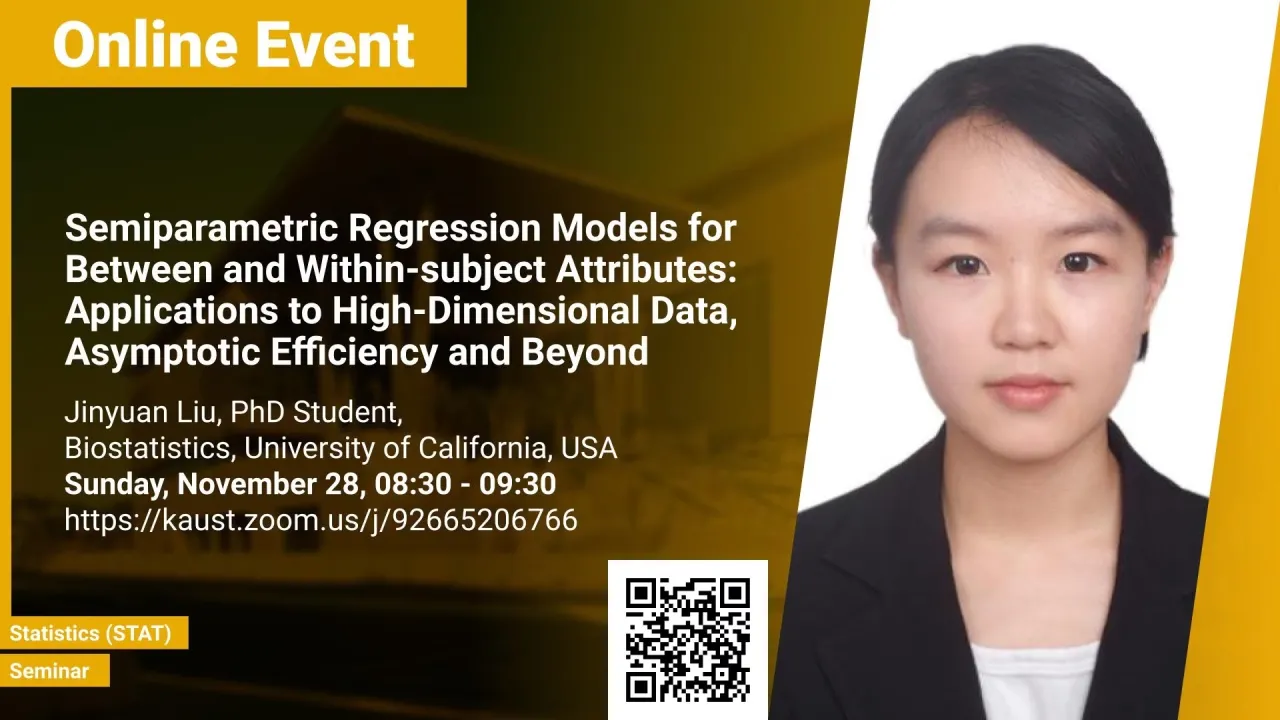
Semiparametric Regression Models for Between and Within-subject Attributes: Applications to High-Dimensional Data, Asymptotic Efficiency and Beyond
- Jinyuan Liu, PhD Student, Biostatistics, University of California, USA
KAUST
Breakthroughs such as high-throughput sequencing are generating flourishing high-dimensional data that provoke challenges in both statistical analyses and interpretations.
Overview
Abstract
Breakthroughs such as high-throughput sequencing are generating flourishing high-dimensional data that provoke challenges in both statistical analyses and interpretations. Since directly modeling such data often suffers from multiple testing and low power, an emerging alternative is to first reduce the dimension at the outset, by comparing two subjects' genome sequences using dissimilarity metrics, yielding “between-subject attributes.” In the first half of this talk, I will extend the classical generalized linear models (GLM) to establish a new regression paradigm for between-subject attributes, using a class of semiparametric functional response models (FRM). Despite its growing applications, the efficiency of estimators for the FRM has not yet been carefully studied. This is of fundamental importance for semiparametric models due to the efficiency loss at the price of minimum model assumptions. For the next half of the talk, we leverage the Hilbert-Space-based semiparametric efficiency theory to show that estimators from a class of U-statistics-based generalized estimating equation (UGEE) achieve the semiparametric efficiency bound. Thus, like GEE for semiparametric GLM, UGEE estimators also harmonize efficiency and robustness, propelling growing applications in biomedical, psychosocial, and related research.
Brief Biography
Jinyuan Liu is currently pursuing a Ph.D. degree in Biostatistics at the University of California, San Diego, USA. Her current research interests include building efficient semiparametric models from high-dimensional data, such as those arising from health-oriented -omics and wearable devices. She is also interested in extending such models in causal inference, longitudinal missing data to drive insights from their intrinsic features. She was the winner of the Student Paper Competition of the Western North American Region of the International Biometric Society (WNAR 2020) as well as the Lingzi Lu Memorial Award for Conference on Statistical Practice (CSP 2017) of the American Statistical Association (ASA).
